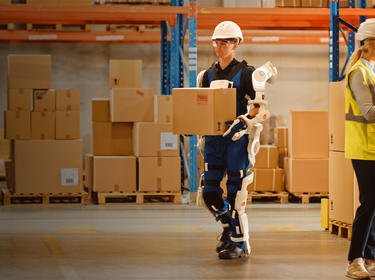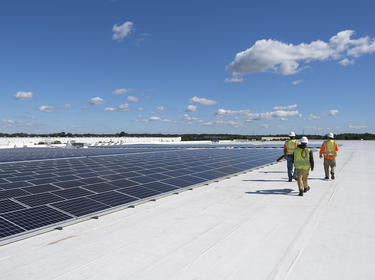Dominate the delivery race
While ramping up throughput with smart warehouses helps companies answer the spike in online spending, they must also contend with new shipping demands. Today, more than 90% of consumers want their packages in three days or less, and 85% will look elsewhere if delivery times are too long. “The Goliaths of the industry, they set the new standard,” says Ian Antoniolli, operations manager at Prologis, referring to e-commerce giants, like Amazon and Walmart. “It’s not easy for small to medium businesses or 3PLs [third-party logistics] to achieve that.”
Digital freight forwarding platform Flexport is an example of a logistics innovator working to level the playing field. “Most companies aren’t able to invest in the technology they need to run the kind of global supply chain that large enterprises can,” said the company’s co-CEO Dave Clark at Prologis’ thought leadership forum GROUNDBREAKERS. Flexport allows real-time information sharing between the sellers of goods and the delivery networks that distribute them to customers—creating significant time and cost efficiencies. “It’s like a supply chain for everybody else.”
COVID shined a spotlight on the fact that we just can’t continue to throw people at the problem. We need to be able to automate a lot of the things that humans don’t like to do.
Ron Kyslinger
President and Chief Executive Officer, Kyslinger Consulting International
Automate your next-gen warehouse
Robotics also help businesses stay competitive by driving safer, faster, more efficient operations. Ron Kyslinger, who spent decades transforming e-commerce at companies small and large, says automation that supports business continuity reigns supreme.
“COVID shined a spotlight on the fact that we just can’t continue to throw people at the problem,” says Kyslinger, who now leads his own consulting firm. “We need to be able to automate a lot of the things that humans don’t like to do.”
Today’s options run the gamut—from shuttle cars to autonomous mobile robots (AMRs) that perform tasks without supervision. All of it leads back to the need for advanced and secure physical and digital infrastructure. “Automation requires fast data because quick decisions have to be made, and you need the network and bandwidth to support that high-tech work environment,” says HeLal.







